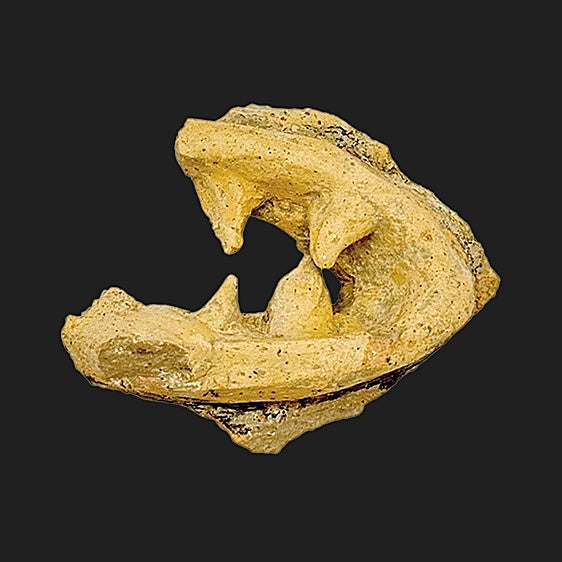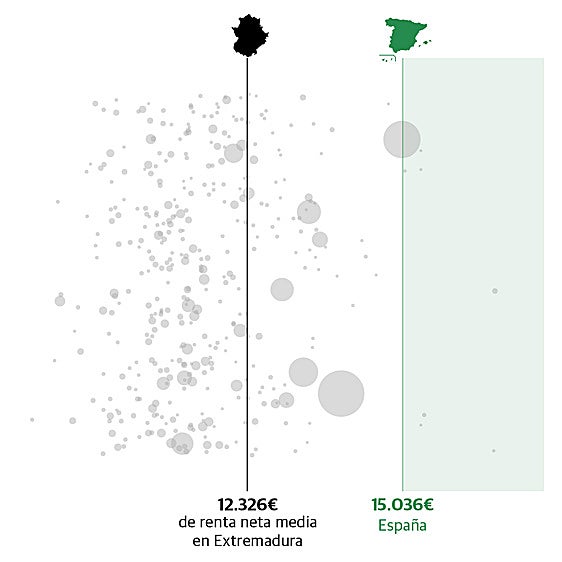A Mediterranean nut with a very promising future
Almond. ·
A product appreciated since ancient times is making a comeback thanks to its sustainability and nutritional valueESPERANZA PELÁEZ
Friday, 4 November 2022, 11:33
For a long time it was thought that the biblical story about Aaron's rod (Numbers 17:8), which bore flowers and fruit while crossing the desert, was the first reference to almond trees being cultivated in the Mediterranean. It may be the first written reference, but thanks to scientist Raquel Sánchez Pérez we have known since 2019 that almonds were being grown thousands of years before the fourth book of Genesis was written (1350-1450 BC).
Sequencing of the almond tree genome established that Prunus dulcis was planted over 11,000 years ago, because it was then that a genetic mutation produced the first nuts without amygdalin, the substance that causes the bitterness in bitter almonds, and when pioneers in agriculture began to select and reproduce the sweet kernels. In the wild, the almonds produced by the trees tend to be bitter. The increase in sweet ones was the result of human intervention.
The Bible is not alone in considering the almond among "the best products of the earth". Almonds also appeared in the tomb of the pharaoh Tutankhamun (who died in 1325 BC) and the Romans, who imported them from Greece, also liked them. They called them 'nux graeca', meaning Greek nuts, or by their Greek name 'amygdala', which is where the Spanish word 'almendra' comes from.
Columela, a 1st century agronomist from Cadiz, advised planting almond trees in warm, dry soil and said their blossom announced the start of spring. The Hebrew name for an almond tree, 'shaqued', means hurried.
Andalusian agronomist Ibn al-'Awwām also spoke of the tree in his Book of Agriculture (12th century). "The almond tree has not required much work," he said, and unlike Columela he advised planting them in cold mountain areas, but facing south. Some of the ancient almond plantations which still remain in Malaga province, in the Montes, the lower basin of the Guadalmedina and the Sierra de las Nieves, follow this logic, while recent intensive plantations are on flat irrigated land.
Almond trees do not cope well with frost, as it ruins the blossom and prevents the nuts from forming. In the Mediterranean they do not prosper north of French Provence, nor further than western India in Asia, although they have been found in similar areas in America and Australia. California produces 80 per cent of the world's almonds, but climate change is affecting production in the USA at a time when demand is surging as more people are becoming vegan. Because it is a profitable, well-established and undemanding crop, during the past decade it has made a major comeback in Andalucía, especially in Granada, Almeria, Malaga (where seven million kilos were harvested in 2021), Cordoba and Seville. In 2017 the region was already producing one quarter of all the almonds grown in Spain.
Spain is the third biggest producer in the world, but still imports more than it grows because, as Alan Davidson says in The Oxford Companion to Food, it is the country that uses almonds the most. "The variety of sweet almonds produced in Spain has no equal," he says. Almonds are used in savoury dishes, to thicken sauces and soups, and it is the main ingredient in 'ajoblanco'. With 5.5% fat, 20% protein (the same as chickpeas) and 143 mg of calcium per 100 grammes, almonds are highly nutritious although they should be consumed in moderation because they also contain 546 calories per 100g.
In recent years, almond milk has been increasingly used as one of the best substitutes for milk of animal origin. That's why more farmers are growing them. But almond milk also has a long history. Alan Davidson believes it became more popular in the West in the Middle Ages due to the Christian church's restriction on eating animal products during Lent. Almond milk was a main ingredient in one of the most refined dishes in medieval times, a type of blancmange made with broth, shredded boiled chicken, almond milk, rice or semolina, sugar and spices.
However, the most widespread use throughout the Mediterranean and Europe was a paste of ground almonds mixed with honey or sugar and egg white, which became one of the most popular desserts. Marzipan, which has a long tradition in Arab culture, came to Europe thanks to the Crusades. The Spanish 'turrón' has cousins such as French nougat and the Italian 'torrone'.
The sweet almond paste, boiled or baked, is used in countless confectionery items and cakes, but the marzipan of central European countries and in Italian sweets like amaretti has a perfumed fragrance which is not so common in Spain: that of bitter almond.
In his book on aromas of the world, Harold Mc Gee explains that benzaldehyde, which is responsible for the smell of bitter almond extract, is part of the system developed by the wild seed to defend itself against predators. "As well as the aromatic benzaldehyde, they produce the bitter and deadly hydrogen cyanide. Both develop when the seed is damaged, like a double chemical defence: the cyanide toxin is accompanied by a volatile warning," he explains. To make almond extract, the benzaldehyde and hydrogen cyanide have to be separated. The almonds are ground, soaked in water for several hours and distilled to obtain the essence.
Almonds are harvested at the end of the summer. The nuts are made to fall by shaking or beating the branches and are collected in a net, dried to separate the nut from the husk, split and peeled ready for drying, toasting or grinding.
In the western Mediterranean the shell that covers the nut is not normally eaten, but in the Middle East newly picked almonds in their shells are considered a delicacy in springtime. They are eaten with a little salt and are acidic.
Another product which is highly coveted and expensive is almond oil. Nowadays this is only used in cosmetics, but in the past it has been used in cooking and was considered a very luxurious ingredient. The oil obtained from pressing bitter almonds is a natural flavouring.
In Spanish culinary tradition, one of the most popular dishes based on almonds is ajoblanco soup. Writer and historian Fernando Rueda, in his research for a new book about gazpacho, discovered that almonds, "like pine nuts and walnuts, were part of the food given to legionnaires, who used to drink their 'posca' (a soft drink made with water and vinegar), with olive oil, bread and nuts.
In other words, the early forms of ajoblanco could be a lot older than we thought.
Despite the amount of time that has passed, almonds are still one of the most promising foods of the future and we now know, thanks to research by scientists like Raquel Sánchez Pérez, that almond trees are one of the most resilient species in the context of climate change.



